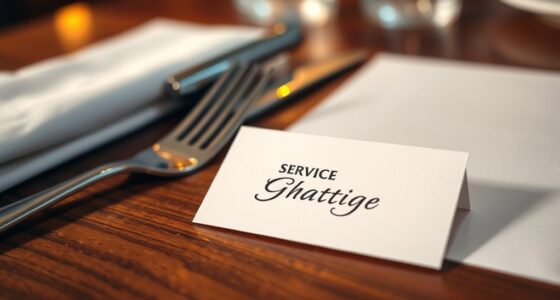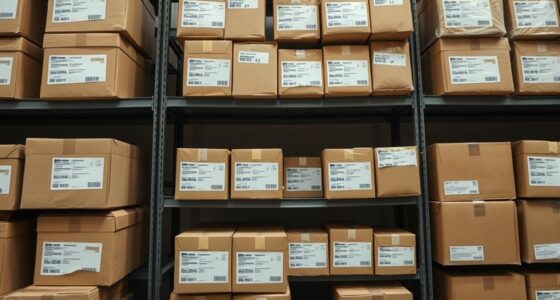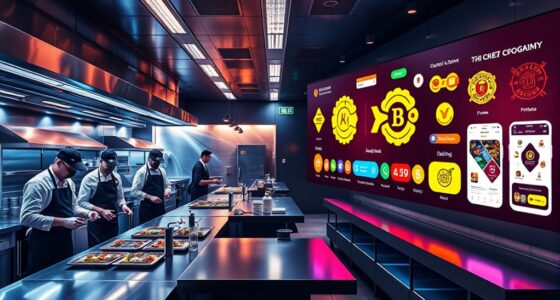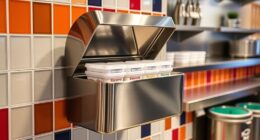Beverage cost is the percentage of total sales spent on alcohol and mixers, helping you assess your overall purchasing efficiency. Pour cost, on the other hand, measures the alcohol expense in a single drink relative to its selling price, guiding portion control and per-drink profitability. Both figures are essential for managing your bar’s costs effectively. Understanding these differences can help you optimize pricing, reduce waste, and maximize profit margins—if you continue exploring, you’ll gain more insights to improve your operations.
Key Takeaways
- Beverage cost is the percentage of total sales spent on alcohol and mixers, while pour cost is the alcohol amount in a single drink relative to its price.
- Beverage cost assesses overall purchasing efficiency over time; pour cost guides per-drink profit margins and portion control.
- Beverage cost helps evaluate pricing strategies and inventory management; pour cost ensures consistent pouring and appropriate pricing.
- High beverage cost may indicate overspending or theft; high pour cost suggests over-pouring or expensive ingredients.
- Both metrics are essential for optimizing profitability, controlling waste, and maintaining operational efficiency in bar management.
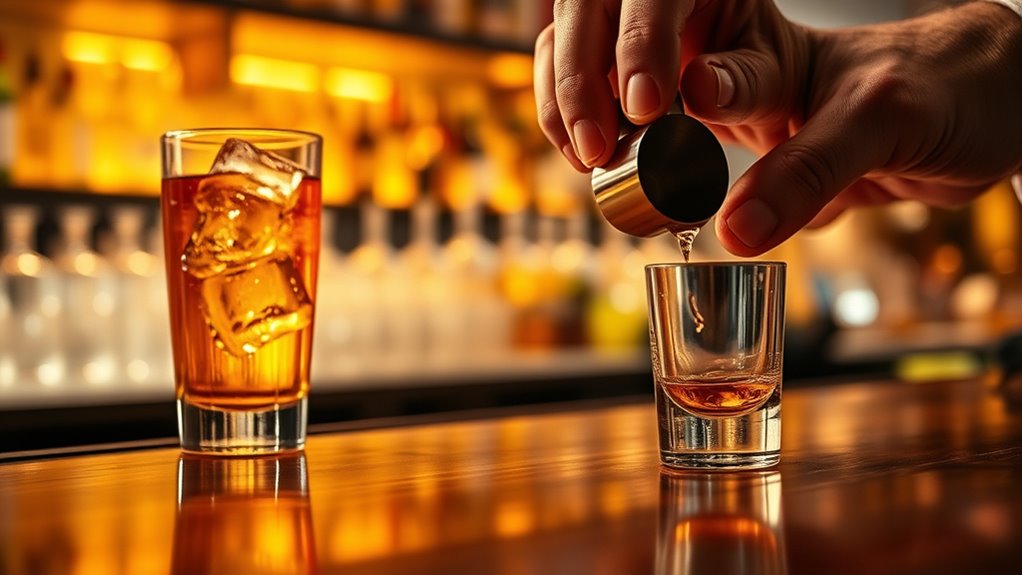
Understanding the difference between beverage cost and pour cost is essential for managing your bar’s profitability. These two metrics are crucial tools that help you make smarter pricing strategies and improve your inventory management. While they’re related, they serve different purposes and provide distinct insights into how your bar operates financially. Grasping their differences allows you to optimize your profit margins and control expenses more effectively.
Understanding beverage and pour costs helps optimize profitability and inventory management.
Beverage cost is the percentage of your total sales that goes toward purchasing alcohol and mixers. It’s calculated by dividing the cost of goods sold (COGS) for beverages by the total sales revenue for the same period. For example, if you spent $1,000 on beverages and your sales for that period are $4,000, your beverage cost is 25%. Maintaining a healthy beverage cost percentage is vital because it indicates whether your pricing strategies are aligned with your expenses. If your beverage cost is too high, it suggests you might need to reevaluate your pricing, control theft, or improve inventory management. Conversely, if it’s too low, you might be undervaluing your drinks, leaving money on the table.
Pour cost, on the other hand, refers to the amount of alcohol in a single drink relative to its selling price. It’s calculated by dividing the cost of the alcohol used in a drink by the selling price of that drink. For example, if a cocktail costs $2 in alcohol and sells for $8, the pour cost is 25%. Pour cost helps you understand how much profit you’re making per drink and guides you in setting appropriate menu prices. It also encourages consistency in pouring and portion control, essential for maintaining your desired profit margins. If your pour cost is too high, you may be over-pouring or using costly ingredients, impacting your overall profitability.
Understanding both costs enables you to develop effective pricing strategies that maximize revenue without sacrificing quality or customer satisfaction. Proper inventory management plays a key role here; by tracking your beverage costs accurately, you can identify waste, theft, or inefficiencies. Adjusting your pours, renegotiating supplier deals, or optimizing inventory levels ensures you keep costs in check while offering competitive prices. It’s about striking a balance: setting prices that cover your costs and generate profit while remaining attractive to customers.
In addition, monitoring your vetted products ensures that you are using safe and effective ingredients, which can influence your cost control and customer satisfaction. In essence, knowing the difference between beverage cost and pour cost allows you to make data-driven decisions. It empowers you to refine your pricing strategies, tighten inventory management, and ultimately boost your bar’s profitability. By regularly monitoring these metrics, you gain a clearer picture of your operational health and can respond swiftly to any issues that might erode your margins. Keeping a close eye on both costs is the key to running a successful, profitable bar.
Frequently Asked Questions
How Do Beverage Cost and Pour Cost Impact Profit Margins?
You can boost your profit margins by monitoring beverage and pour costs closely. Lower costs allow for better pricing strategies and improved inventory management, reducing waste and overpouring. When you keep these costs in check, you ensure your prices are competitive while maintaining healthy margins. Consistently tracking these metrics helps you identify inefficiencies, optimize pricing, and maximize profits, making your overall business more profitable and sustainable.
What Tools Are Best for Calculating Beverage and Pour Costs?
You should use cost tracking tools like POS systems and inventory management software to accurately calculate beverage and pour costs. These tools help you monitor inventory levels, sales, and wastage in real-time, making it easier to determine precise costs. By leveraging these technologies, you can identify cost fluctuations, optimize pricing, and improve profit margins through better control over your beverage expenses.
Can Pour Cost Be Higher Than Beverage Cost? Why?
Imagine a leaky faucet causing a noticeable drip—this highlights pour cost anomalies. Yes, pour cost can be higher than beverage cost due to factors like spillage, waste, or inaccurate measurement, creating a cost discrepancy. These issues often stem from inconsistent pouring techniques or equipment problems. Addressing these discrepancies helps you control expenses better, ensuring your profit margins stay healthy and your operations run smoothly.
How Often Should a Business Review Its Beverage and Pour Costs?
You should review your beverage and pour costs weekly or biweekly to stay on top of inventory management and identify theft or waste early. Regular reviews help you spot trends, adjust pricing, and verify staff training is effective in controlling costs. By consistently monitoring these costs, you can maintain profitability, optimize inventory, and ensure your team follows proper pouring techniques, ultimately boosting your business’s efficiency and revenue.
What Common Mistakes Lead to Inaccurate Beverage and Pour Cost Calculations?
Oh, the joys of measuring accuracy—unless, of course, you forget to double-check inventory discrepancies. That’s a common mistake leading to inaccurate beverage and pour cost calculations. When you ignore stock variances or underestimate waste, your costs become as unreliable as a weather forecast. Always track inventory carefully and reconcile discrepancies regularly. Otherwise, you’ll wonder why your profit margins mysteriously evaporate faster than your patience on a busy night.
Conclusion
Now that you see the dance between beverage cost and pour cost, you hold the rhythm of your bar’s heartbeat. Mastering these numbers is like tuning an instrument, ensuring every note hits just right. Keep your eyes sharp, your calculations steady, and let your profit sing in harmony. When you strike the perfect balance, your business flows smoothly, like a well-crafted cocktail—smooth, balanced, and unforgettable.


